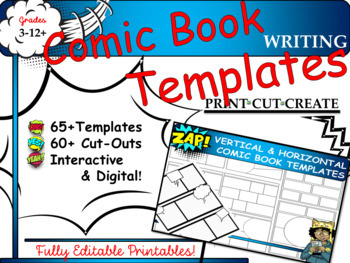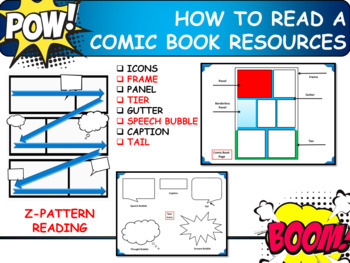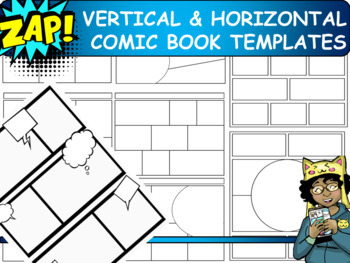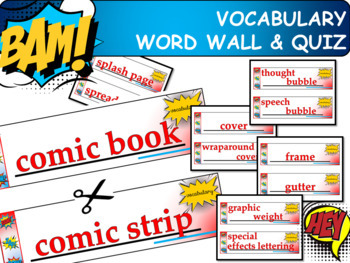Comic Book Strip Writing Templates & Story Boards
- Zip
What educators are saying
Description
Comic Book Strip Writing Templates
Grades 3-12
Includes:
> 7 Pages of How to Read a Comic Book & Graphic Novel Resources
> 65+ Comic Book Templates (35 Vertical PNGS)
> 25+ Speech Bubble Cut-Outs
> 25+ Onomatopoeia Printable Cut-Outs
> Pre-Planning & Writing Templates
> Vocabulary Reference Handout, Quiz, & Word Wall
OVERHAULED & UPDATED 10.10.2022!
Product Preface:
Your students can cut the bubbles and graphics out and paste them onto the comic strips or they can use the graphics as inspirational material and draw in their own speech bubbles and onomatopoeia. You can use these templates in a variety of ways it and for multiple subjects.
As an ELA resource, you can use the strips to summarize, retell, and create original material for both fiction and non-fiction informational texts. You can use the strips in history and science as well as art and foreign language. They work well for public service campaigns, guidance counseling, as a form of writing therapy, etc. You are only limited by your imagination!
This product is also available in Bundled Form for $aving$--Purchase the Bundle here:
Writing Template Bundle of 4 Products [TO BE UPDATED SOON]
Please feel free to ask any questions—I will definitely respond to all inquiries in a timely fashion.
Please, check out my other products and resources: SophistThoughts™
Hopefully my products will help strengthen your lessons, help your students learn, and make your life easier. Thank you and enjoy! J.D. Whitaker
{{All images used are in the Public Domain}}
Copyright © 2012 James D. Whitaker, SophistThoughts, Inc.
All rights reserved by author.
Permission to copy for single classroom use only.
Electronic distribution limited to single classroom use only.
Not for public display.
Common Core Anchor Standards>>>>>>>>>>>
CCSS.ELA-Literacy.CCRA.R.1 Read closely to determine what the text says explicitly and to make logical inferences from it; cite specific textual evidence when writing or speaking to support conclusions drawn from the text.
CCSS.ELA-Literacy.CCRA.R.2 Determine central ideas or themes of a text and analyze their development; summarize the key supporting details and ideas.
CCSS.ELA-Literacy.CCRA.R.3 Analyze how and why individuals, events, or ideas develop and interact over the course of a text.
CCSS.ELA-Literacy.CCRA.W.1 Write arguments to support claims in an analysis of substantive topics or texts using valid reasoning and relevant and sufficient evidence.
CCSS.ELA-Literacy.CCRA.W.2 Write informative/explanatory texts to examine and convey complex ideas and information clearly and accurately through the effective selection, organization, and analysis of content.





